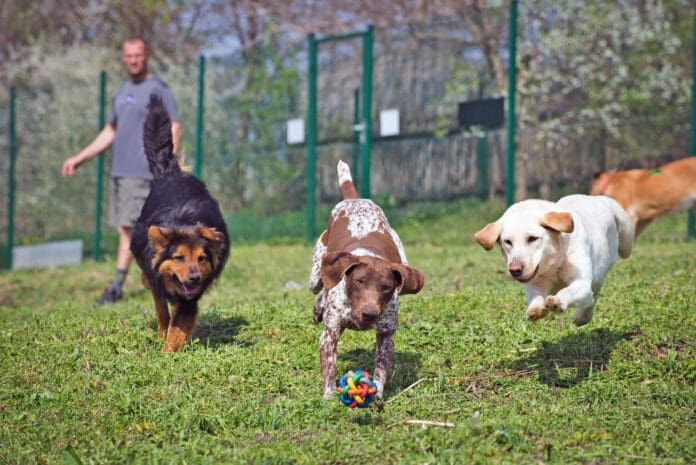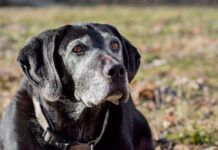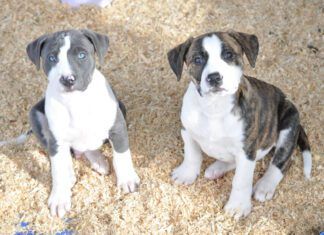Over the weekend, your dog mingled with lots of other canine friends, and now he is coughing, honking like the cough associated with kennel cough. You may remember that you have some leftover antibiotics, like doxycycline, on hand and wonder if it will help. No! This is not a great idea for multiple reasons.
Many, if not most, cases of kennel cough are primarily viral. Doxycycline is an antibiotic, which means it only treats bacterial infection—and only susceptible bacterial infections at that, like bartonella. Giving your dog doxycycline for kennel cough will not help and may contribute to the development of antibiotic-resistant bacteria.
Doxycycline Side Effects
In some illnesses, doxycycline is by far the best antibiotic choice, and your veterinarian will prescribe it. Most side effects are related to the gastrointestinal tract. Even if given with food, doxy may cause vomiting, diarrhea, or anorexia (not wanting to eat) in a dog. Liver enzymes may increase. Doxycycline should only be used with caution for a dog with any sort of liver problem.
Note: Avoid doxy for growing puppies and pregnant dogs as well due to effects on developing bones and teeth.
Almost all medications have some interactions with other drugs, and doxy is no different. Doxycycline can interfere with antacids and phenobarbital, which is given for seizures. If your dog is on these medications, your veterinarian will help you with a dosing schedule that can work around these problems.
Help For Kennel Cough
Back to your coughing dog! Most cases of “kennel cough” or canine infectious respiratory disease complex (CIRDC) will have multiple pathogenic agents involved. The most common are Bordetella bronchiseptica (a bacteria), parainfluenza virus, herpesvirus, adenovirus, and mycoplasma.
Dogs with uncomplicated kennel cough tend to have a dry, “honking” cough. They usually sound much worse than they feel. The cough is exacerbated by exercise, anything pulling or pushing on their trachea like a leash and collar, and sometimes eating and drinking. Your dog may be tired and not eat well.
A pure, viral kennel cough is non-productive and dry. If your dog’s cough changes to a “wet” cough, as in coughs up discharge or has quite a bit of nasal discharge, he probably has a secondary infection and may progress to pneumonia. Difficulty breathing and a fever are signs that pneumonia may be involved. If a secondary infection like this has set in, an antibiotic such as doxycycline may come into play.
Dogs with a cough are generally diagnosed by a physical exam that includes listening carefully to the dog’s chest with a stethoscope. Your veterinarian will rule out any sort of cardiac condition and may recommend X-rays if there is concern about pneumonia, a heart problem, or cancer.
Treating Kennel Cough
Treating a dog with kennel cough often consists mainly of nursing care. There are no canine anti-viral medications for canine coughs. Antitussives (cough medications) such as butorphanol may be prescribed by your veterinarian if your dog is exhausted from coughing and needs to rest. Setting up a humidifier for the room your dog tends to hang out in and keeping him in the bathroom while you shower can ease the cough.
Encourage your dog to eat and drink. Since his sense of smell may be altered. In these cases, smelly food choices can help. The liquid from a can of tuna mixed with some water can be enticing. We all laugh about chicken soup, but low-sodium chicken with rice or low-sodium chicken noodle soup may hit the spot for your dog.
If you normally walk your dog in a collar, consider switching to a harness during this time. Be sure the harness does not put pressure on the trachea. Limit your dog to leash walks, no running with playmates (plus, remember, kennel cough is highly contagious), or playing fetch. Avoid any regular training classes, boarding, or daycare routines until the cough is cleared. You don’t want your dog to be the “Kennel Cough Kid” who spreads the problem! Most dogs will show improvement within a week and be fine after two weeks with just home care.
If your dog appears to be ill, or getting worse, he may need veterinary attention. Cases that move on to pneumonia may require hospitalization with IV fluids and supplemental oxygen.
Controlling Kennel Cough
Kennel cough is spread via droplets expelled when coughing. Dogs can pick up the virus through sniffing an infected dog and from contaminated surfaces, including food and water bowls as well as toys. That means you need to practice great hygiene at home, especially if you have multiple dogs. Realistically, the other dogs will have been exposed and, unless they have immunity through a vaccination, they may end up coughing too. Think of your family sharing a cold.
The best way to avoid cases of kennel cough is to use preventive vaccinations. The kennel cough (Bordetella) vaccine is considered lifestyle vaccination choice, meaning a non-core vaccine that is recommended depending upon your dog’s activities. If your dog stays at home most of the time—no training classes, sports competitions, grooming appointments, or daycare visits—he probably does not need a kennel cough vaccine. If he participates in any of these activities, you need to discuss a vaccination with your veterinarian.
Versions of vaccines for CIRDC vary. Parainfluenza and adenovirus type 2 are both generally included in your dog’s routine distemper/parvo vaccinations. Bordetella, or kennel cough, is generally given separately.
For the Bordetella vaccine, three versions are available:
- This vaccine may include parainfluenza and adenovirus, or it may be straight Bordetella. The plus to this vaccine is that it provides local immunity, catching the pathogen right as it enters your dog’s system. It can be tricky to give as many dogs resent being held so still and fight getting drops in their nose. Many a veterinarian and vet technician have gotten a dose of this vaccine themselves when a dog sneezes it back in their faces!
- This involves using a plastic syringe to put the vaccine inside your dog’s mouth, usually via a cheek from the side. This puts the vaccine near the pharynx, so the local immune system also catches the bacteria as it enters your dog’s respiratory system. Currently, this vaccine is pure Bordetella.
- The vaccine is injected into the dog under the skin.
All these vaccines should be boostered annually for dogs with likely exposures. None have the complete coverage like a rabies vaccine. Some vaccinated dogs will still get a cough, but generally symptoms are milder and recovery is faster.






